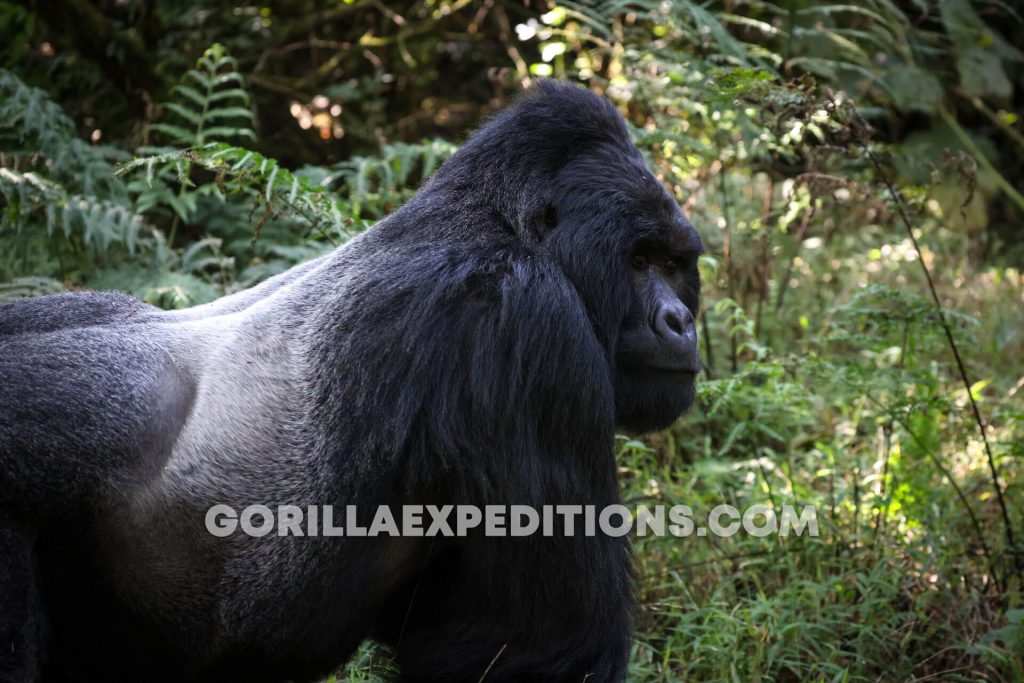Rwanda Gorilla Families
Mountain Gorillas of Rwanda
The mountain gorilla is an endangered species found only in the Virunga Mountains, spanning Rwanda, Uganda, and the Democratic Republic of Congo. In Rwanda, the park’s gorillas live in tight-knit social groups led by a dominant silverback. The silverback’s role is crucial: he ensures the safety of the group, makes decisions about movements and feeding, and maintains social harmony. Adult females care for their young, while juveniles learn social behaviors through play and interaction. Observing these dynamics provides a rare window into the intelligence, emotional depth, and social complexity of gorillas.

Notable Gorilla Families in Volcanoes National Park
Volcanoes National Park is home to more than 20 habituated gorilla families, though only some are open to trekkers at a given time. Here are the most well-known families:
- Susa Family: Led by a gentle silverback, Susa is known for its calm and approachable demeanor. The family includes several playful juveniles, which often entertain visitors with their antics.
- Hirwa Family: A highly active group that covers larger territories, the Hirwa silverback is protective and demonstrates clear leadership. Trekkers can often observe the family navigating steep forested slopes together.
- Harambe Family: One of the most frequently visited groups, Harambe offers a perfect glimpse into gorilla social life. The family’s open feeding habits make them ideal for photography and close observation.
- Amahoro Family: Famous for its playful juveniles and social interactions, this group provides an excellent opportunity to witness grooming and bonding activities that highlight gorilla intelligence.
- Sabyinyo Family: This large and dynamic group lives near the Sabyinyo volcano. Their social interactions are lively, with older juveniles playing energetically while the silverback ensures peace and order.
- Hirwa-Kabirizi Family: A recently habituated group, this family is moderately sized and known for its gentle interactions with trackers. Observing their daily routines offers unique insights into gorilla behavior.
- Bweza Family: Led by a strong and confident silverback, Bweza is known for frequent chest-beating displays and protective behavior. Visitors often witness interactions between family members that reflect complex social bonds.
- Umubano Family: Recognizable by its highly social juveniles, Umubano’s members engage in playful wrestling and frequent grooming, demonstrating strong family ties.
- Susa-Kabirizi Family: A subgroup of the original Susa family, this group has been observed forming close relationships with trackers and showing curiosity toward visitors.
- Amahoro-Kwitonda Family: Known for its calm behavior, this group often feeds in open areas, making it easier for visitors to observe their interactions without disturbance.
Each gorilla family has its own story, leadership style, and behavioral patterns. For travelers, every encounter is unique, and observing these social dynamics up close is a life-changing experience.
Gorilla Behavior and Characteristics
Mountain gorillas are primarily herbivores, feeding on leaves, stems, fruits, and occasionally bark. Despite their immense size, they are gentle and intelligent. Visitors may witness a silverback chest-beating to assert dominance, females grooming each other to maintain bonds, or juveniles playing to practice survival skills. Vocal communication is rich and varied, from soft grunts to loud roars, allowing gorillas to coordinate movements and warn of potential threats.
Gorilla Behavior and Characteristics
Rwanda has established strict rules for gorilla trekking to protect these magnificent creatures. Visitor numbers and trek durations are limited, and all interactions are closely monitored. Maintaining a safe distance and following guide instructions ensures both visitor safety and gorilla welfare. Responsible tourism helps preserve their habitat and contributes to ongoing conservation efforts.
Planning Your Gorilla Trek
The best time for gorilla trekking in Rwanda is during the dry seasons, from June to September and December to February. Each trek begins with a briefing on safety and gorilla etiquette, followed by a guided hike through lush forest to locate the gorilla family. Once found, visitors can spend up to an hour observing the family, taking in every aspect of their daily lives.
Conservation and Community Impact
Gorilla tourism in Rwanda generates crucial revenue for park management, local communities, and conservation initiatives. Over the past few decades, these efforts have significantly increased mountain gorilla populations. Visitors support the protection of endangered species and the well-being of surrounding communities by participating in responsible trekking experiences.
Observing these humanlike creatures up-close.
Rwanda’s gorilla families, from the gentle Susa group to the lively Sabyinyo family, provide a window into the complex and intelligent lives of mountain gorillas. Observing their social interactions, behaviors, and personalities leaves travelers with memories that last a lifetime. For those ready to experience this extraordinary adventure, inquire and book your gorilla trekking experience with us at Volcanoes National Park. Witness the magic of Rwanda’s gentle giants and create an unforgettable connection with nature.
